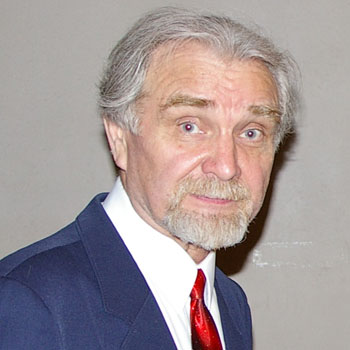Editor Profile

Vladimir Zaichick
University/Organization: Moscow Institute of Engineering Physics
Country: Russian Federation
Biography
Vladimir Zaichick is a Nuclear Physicist and Researcher. He obtained his MS in 1966 from the Moscow Institute of Engineering Physics, Faculty of Theoretical and Experimental Physics, Moscow, Russia, and his PhD (nuclear physics) in 1972 from the Institute of Biophysics Moscow, Russia, and his DSc (radiobiology) in 2011 from the Medical Radiological Research Centre, Obninsk, Russia. He is a fellow of the Royal Society of Chemistry (since 1996), a Chartered Chemist (since 1996), a member of the American College of Nuclear Medicine (since 1997), the American Society for Bone and Mineral Research (since 1998), a Presidium Member of the Scientific Council on the Application of Nuclear Methods of the Russian Academy of Sciences (since 1999), and a member of the Scientific Council on Analytical Chemistry of the Russian Academy of Sciences (since 1978). He has made 140 presentations at seminars and international meetings and also published over 500 papers and 18 patents.
Research Interest
Following new developments in analytical techniques, an attempt to develop them further as a new medical tool (to be employed with available medical tools such as those using anatomic, physiological, morphological, biochemical, methods etc.) was made. This tool studies the content of chemical elements in human tissues and fluids and this choice of a research field was based on the following hypothesis. Knowledge that the elemental homeostasis under normal conditions can be changed under both pathological states and unfavorable action of the environment, can provide a powerful method of investigation. Further the considerable development of methods used in nuclear physics and semiconductor engineering in the fifties and sixties opened new wide-scale prospects for study of the elemental composition of the human body. Neutron activation and X-ray fluorescence methods for the assessment of about 25 of the most important major and trace elements have been developed under clinical conditions for material obtained from both in vivo and in vitro (the material obtained from puncture biopsies, smears, scrapings, etc., in addition to either resected or necropsied material) application. Also studied was the age variation of chemical element content in intact human tissues and fluids (bone, teeth, thyroid, prostate, mammary gland, intestine, lung, rectum, hair, whole blood, blood plasma and serum, mixed saliva and prostatic tissue and secretion). The results of the study confirmed well the hypothesis of elemental homeostasis. It was found that the elemental content of tissues and fluids changes greatly with different diseases. These specific changes can be successfully used to aid diagnoses. Furthermore, it was shown that anthropogenic alterations of the internal milieu, as well as external influence (e.g. radiation, hypokinesia, food supplementation) could be a reason for many pathological states since they destroyed the evolution-determined existing balance of major and trace elements in the human body. New methods of diagnosis, which were consequently developed on the basis of nuclear methods have several indisputable advantages over others. Their application in future medical investigations is particularly attractive, for example when aimed at general screening examination of the population for early diagnosis of different diseases and for permanent bioecological monitoring including study of human tissues and fluids.
 Scientia Ricerca is licensed and content of this site is available under a Creative Commons Attribution 4.0 International License.
Scientia Ricerca is licensed and content of this site is available under a Creative Commons Attribution 4.0 International License.